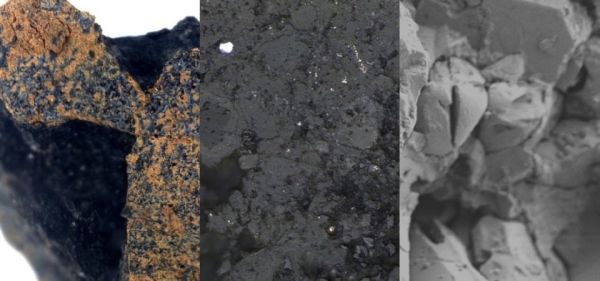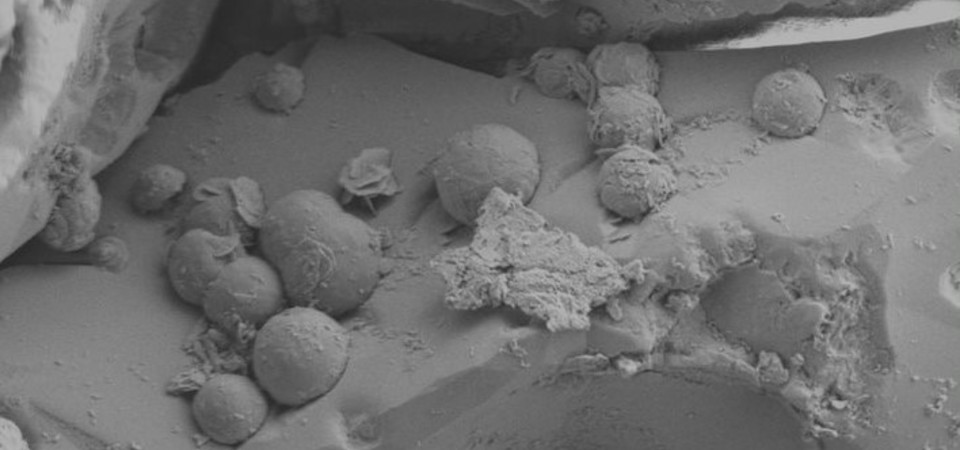4.6 billion-year-old meteorite found in horseshoe footprint
The meteorite is a rare carbonaceous chondrite.

A crumbling hunk of rock found in a field in England is a rare meteorite from the earliest days of the solar system, dating back about 4.6 billion years.
The meteorite was found in Gloucestershire in March by Derek Robson, a resident of Loughborough, England, and the director of astrochemistry at the East Anglian Astrophysical Research Organisation (EAARO). The meteorite was sitting in the imprint of a horseshoe left behind in a field, according to Loughborough University.
The space rock is a carbonaceous chondrite, a rare category that makes up only 4% to 5% of meteorites that are found on Earth. These meteorites hail from the asteroid belt between Mars and Jupiter and formed early in the history of the solar system. Intriguingly, they often contain organic, or carbon-bearing, compounds, including the amino acids that make up the basic building blocks of life. This raises questions about whether these meteorites hold clues to how living things first emerged in the solar system.
Related: The 7 strangest asteroids: Weird space rocks in our solar system
Unlike other space debris, this chunk of rock didn't endure the violent collisions and intense heat involved in the creation of the solar system's planets and moons.
Rather, the meteorite has "been sitting out there, past Mars, untouched, since before any of the planets were created," Shaun Fowler, a microscopist at Loughborough University, said in a statement, "meaning we have the rare opportunity to examine a piece of our primordial past."
The rock is small, charcoal-colored and fragile, sort of like a chunk of crumbling concrete. The meteorite is mostly made of minerals such as olivine and phyllosilicates, Fowler said, as well as round grains called chondrules, which were partially molten beads incorporated into the asteroid when it first formed.
Get the Space.com Newsletter
Breaking space news, the latest updates on rocket launches, skywatching events and more!
"But the composition is different to anything you would find here on Earth and potentially unlike any other meteorites we've found — possibly containing some previously unknown chemistry or physical structure never before seen in other recorded meteorite samples," Fowler said.

Researchers at Loughborough University and EAARO are using electron microscopy to study the surface of the meteorite down to the nanometer (a billionth of a meter), as well as techniques called vibrational spectroscopy and X-ray diffraction, which allow them to delve into the chemical structure of the minerals in the meteorite. If the team can confirm the presence of amino acids in the sample, the findings might reveal new information about how the early geochemistry of the solar system set the stage for life. The examination of the meteorite is still in the initial stages.
"At this stage, we have learned a good deal about it, but we've barely scratched the surface," Sandie Dann, a chemist at Loughborough University, said in the statement.
Originally published on Live Science.
Join our Space Forums to keep talking space on the latest missions, night sky and more! And if you have a news tip, correction or comment, let us know at: community@space.com.

Stephanie Pappas is a contributing writer for Space.com sister site Live Science, covering topics ranging from geoscience to archaeology to the human brain and behavior. She was previously a senior writer for Live Science but is now a freelancer based in Denver, Colorado, and regularly contributes to Scientific American and The Monitor, the monthly magazine of the American Psychological Association. Stephanie received a bachelor's degree in psychology from the University of South Carolina and a graduate certificate in science communication from the University of California, Santa Cruz.










